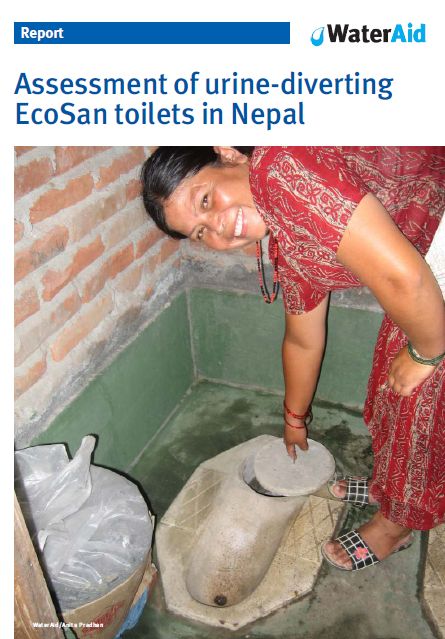
Published in: 2008
Publisher:
WaterAid, Nepal
Author:
Pradhan, A.
Uploaded by:
SuSanA secretariat
Partner profile:
common upload
9782 Views
136 Downloads
Location of library entry
Content - Summary
Across the world, ecological sanitation (EcoSan) is increasingly being seen as a serious and realistic alternative for providing safe sanitation, reducing the health risks associated with poor sanitation, protecting water resources and soil fertility, and optimising resources management. The main features of EcoSan are containment of waste, sanitisation and re-use as plant nutrients and soil stabilisers.
The re-use of human excreta and organic waste as fertiliser is not new in
Nepal. However, the concept of EcoSan in its modern sense was first
introduced in Nepal in 2002, and since then more than 500 urine-diverting
EcoSan toilets of various models have been constructed in different parts of the country. Several organisations, including government and non-government agencies as well as some international agencies, are involved in promoting this technology and there is an increasing level of awareness of EcoSan and its benefits among professionals and policy makers. However, despite this positive development there remains a lot of work to be done before a real paradigm shift in sanitary provision can occur whereby people do not equate sanitation simply as access to toilets but rather to total and ecologically sound sanitation. In this context, the Environment and Public Health Organisation (ENPHO) has conducted a study, with assistance from WaterAid in Nepal, to assess the performance of urine-diverting EcoSan toilets in Nepal.
The study has found that, overall, the development and promotion of EcoSan
toilets in Nepal has been very good. Although most of these toilets have been built in the Kathmandu valley, the application of this technology has been slowly spreading to other parts of the country as well. EcoSan toilet designs have been developed and improved over the years to suit the local context. Different designs have been developed to cater for different needs, and innovations such as Wet EcoSan and Indoor EcoSan have also been developed locally. The study has found that most of the EcoSan toilets are being operated and maintained in a proper manner and most of the toilets are clean and hygienic.
Bibliographic information
Pradhan, A. (2008). Assessment of urine-diverting EcoSan toilets in Nepal. WaterAid, Nepal
Filter tags
East Asia & Pacific English Guidelines and manuals Practitioners Urine diversion dehydration toilets (UDDTs)














